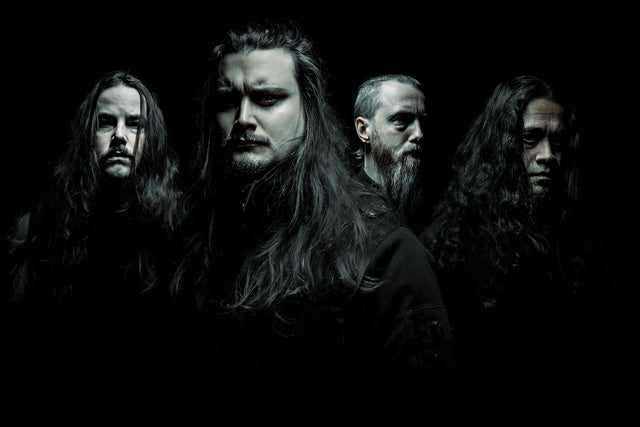Orbit Culture come from small-town Sweden, blending groove metal weight with sharp, melodic leads.
Steel roots, cold melody
They built their name online and on hard touring, with
Nija and
Descent pushing them into bigger rooms. Expect a set that balances thump and lift, with likely anchors like
Open Eye,
Vultures of North,
From the Inside, and
Descent.
What the room feels like
The crowd trends mixed in age and gear-nerdy, with patched vests next to clean sneakers, and plenty of people wearing earplugs while nodding on the off-beat. You will notice drummers clocking the double-kick patterns and guitarists studying the down-pick stamina up close. Trivia time: Karlsson often layers his own harmonies in the studio, and the band hails from Eksjo, a small Swedish town that prizes quiet focus. Consider these setlist and production details as educated surmises drawn from prior shows, not fixed guarantees.
Life around an Orbit Culture show
Black threads, bright eyes
You see a lot of black long-sleeves with sleeve prints, patched jackets with Nordic bands, and newer fans mixing in clean, minimal fits. Between bands, people trade notes on picks and tunings, with quick demos of down-picking technique happening by the bar. Chants pop up on the tom-builds, often a clipped 'hey' on the downbeat, and a simple 'OC' call before the encore that the band usually flips into a count-in.
Rituals in the pit
Merch leans practical and heavy on graphics, plus the occasional limited vinyl variant that disappears before the headliner starts. Phones come out for the big chorus lifts, but during the grooves most people keep their hands free for claps and quick pit resets. The overall mood is focused and supportive, with room made for crowd surfers and a steady stream of thanks shouted back to the stage. You leave with ringing ears, a mental list of riffs to check later, and maybe a new patch or two to sew on at home.
How Orbit Culture makes heavy feel precise
Weight with room to breathe
Orbit Culture center the vocal contrast, with Niklas jumping from grit to a clear, almost choral ring on choruses. Riffs ride low tunings on 7-strings, but the parts leave space so the bass can mirror the figure without turning to mush. Drums favor steadier tempos with smart bursts, saving the fastest flurries for fills that reset tension rather than constant sprinting.
Small choices, big impact
Live, they often extend a pre-chorus by a few bars to milk suspense, then drop the chorus right as lights warm from ice-blue to amber. Guitars double the main pattern while the second player climbs a simple harmony, which widens the hook and keeps the pit moving in even steps. A lesser-known live tweak: they sometimes play
Open Eye a tick slower than the record, letting the kick pattern breathe and making the chorus sing-back cleaner. Effects stay tasteful, with subtle pads under verses and only the occasional backing track to glue big gang-vocal moments.
Kinships and Crosswinds: Orbit Culture fans might also ride these waves
Kindred heavies, shared pulse
Gojira is the closest cousin, sharing tight right-hand riffing, eco-dread themes, and a live punch that favors groove over chaos.
In Flames appeals to the melodic side of
Orbit Culture fans, with soaring choruses over cutting riffs from the same Swedish lineage.
Trivium connects through disciplined picking, big sing-alongs, and a modern metal crowd that likes clarity with the crunch.
Fit for an Autopsy brings the low-end heft and cinematic breaks that echo the darker corners of
Descent. For technical grit without losing hooks,
Sylosis sits in a similar pocket, often pacing sets with midtempo crushers before sprint finishes. Fans who value precise rhythm work and cathartic but tuneful roars tend to find common ground across these bills.



